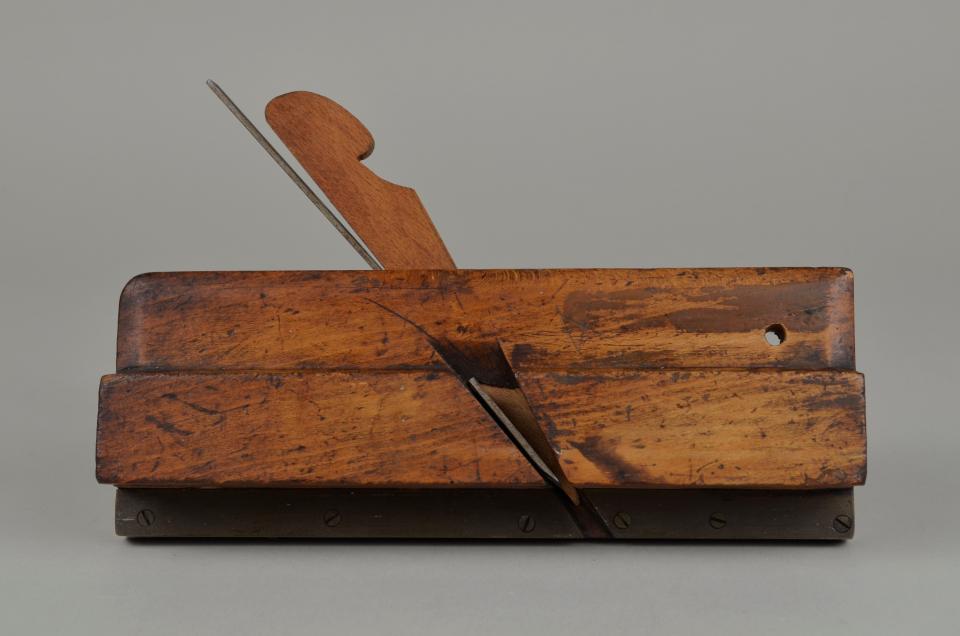
L: 23.5cm W: 4.0cm H: 16.3cm
a- L: 23.5cm W: 4.0cm H: 8.5cm
b- L: 16.5cm W: 2.4cm H: 0.8cm
c- L: 18.7cm W: 3.2cm H: 0.2cm
A wooden tonguing plane consisting of 3 parts.
a- The body is rectangular and made of a brown hardwood. A cheek protrudes from the bottom half of the front body. The throat cuts diagonally through the middle of the body and is exposed through the cheek. A small hole runs widthwise through the body. The sole is flat with a straight groove running down the middle. The back edge of the sole extends down to form a fence. The fence is lined by a dark metal strip secured by 6 slotted screws. Stamps on the toe read: "D. MALLOCH/PERTH"; "W. BYRD"; "I BLOWER". Stamps on the heel read: "W. BYRD"; "I BLOWER"; "7/8".
b- The wedge is made of a hardwood similar to the body. It tapers to a point on one end and is rounded in an elliptical form on the other. A small angular cut-out below the head allows for easy handling.
c- The iron is a narrow strip of light grey metal. It abruptly widens near the cutting edge. The cutting edge consists of two parallel chisel edges separated by a shallow gap. The widths of the cuts are (l-r): 3/8"; 1/2"; gap 3/8".
Tonguing planes cut two parallel grooves in a workpiece. They are used in conjunction with a corresponding grooving plane to create tongue-and-groove joins. When used together, they are known as match planes. The iron of a tonguing plane contains two sharp edges and a central notch that leaves a raised ridge.
